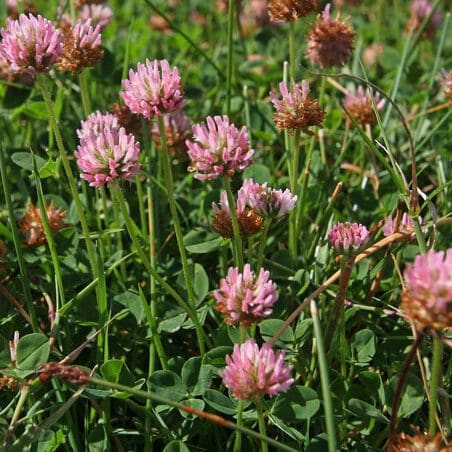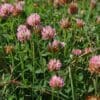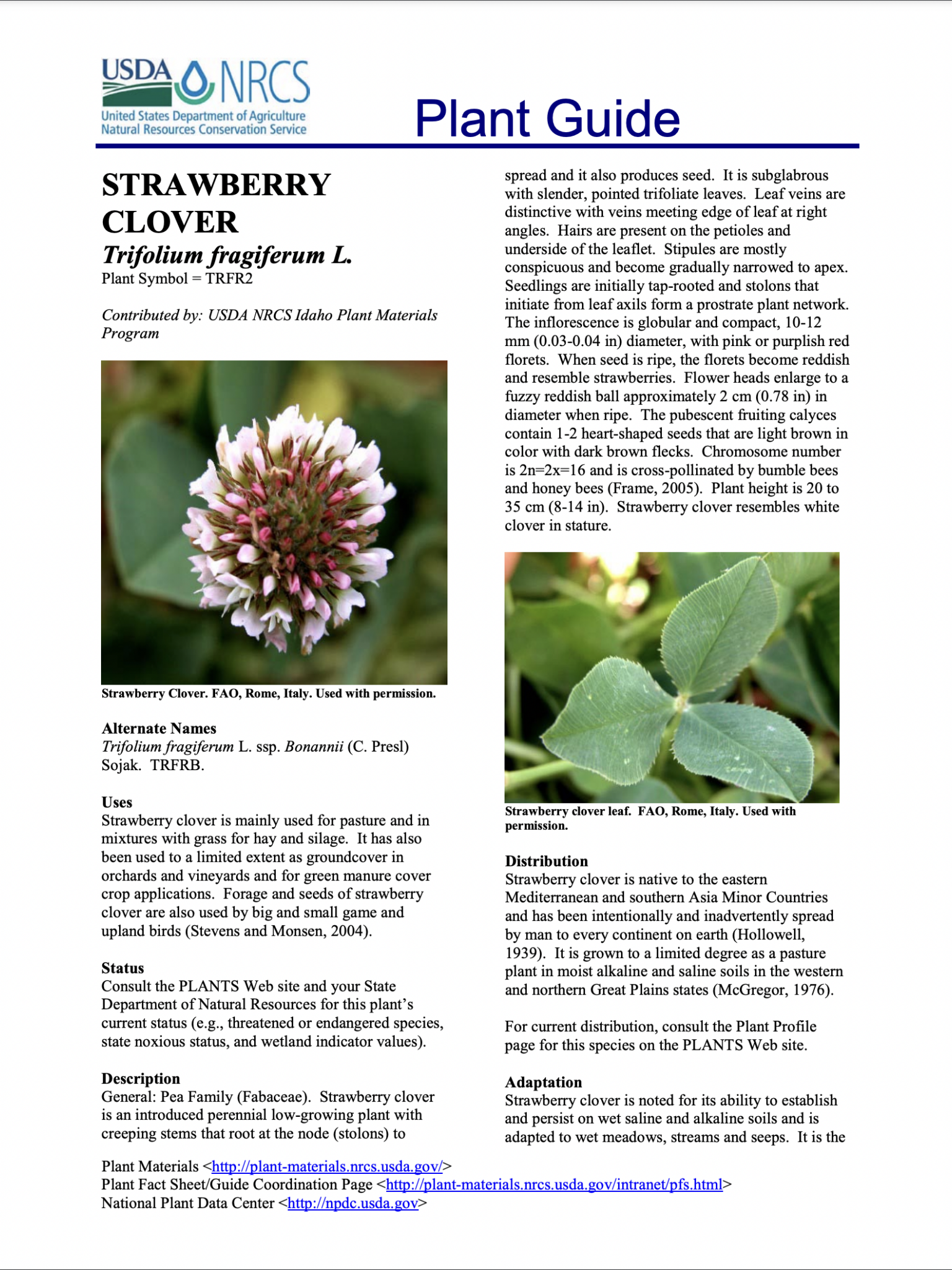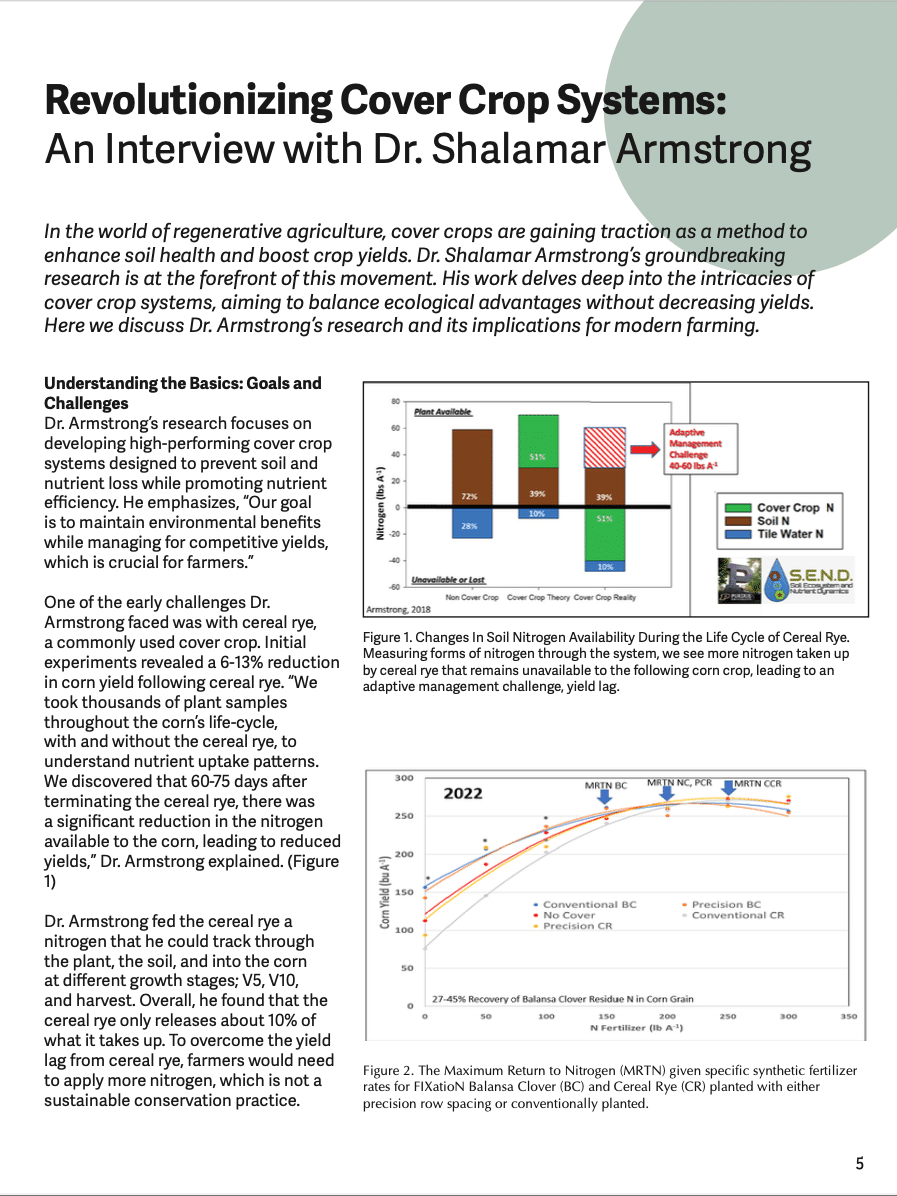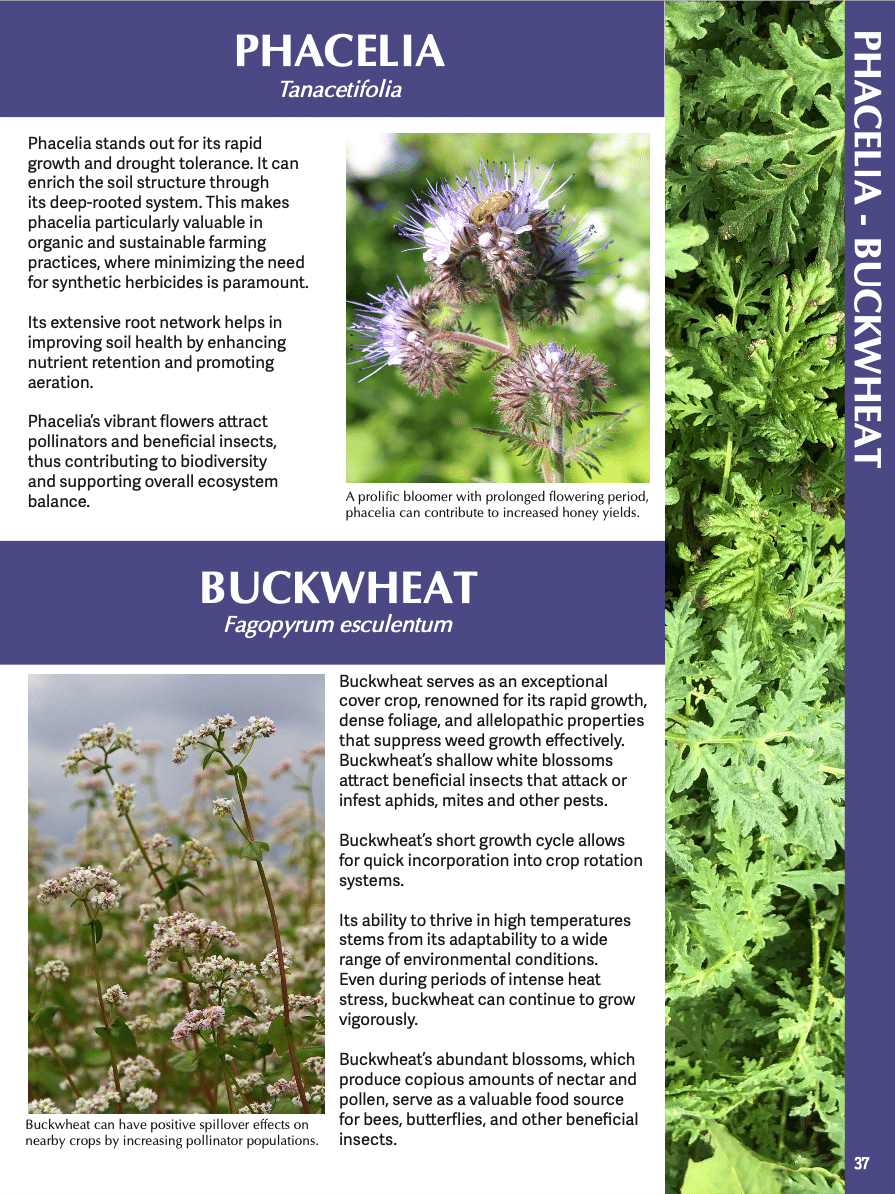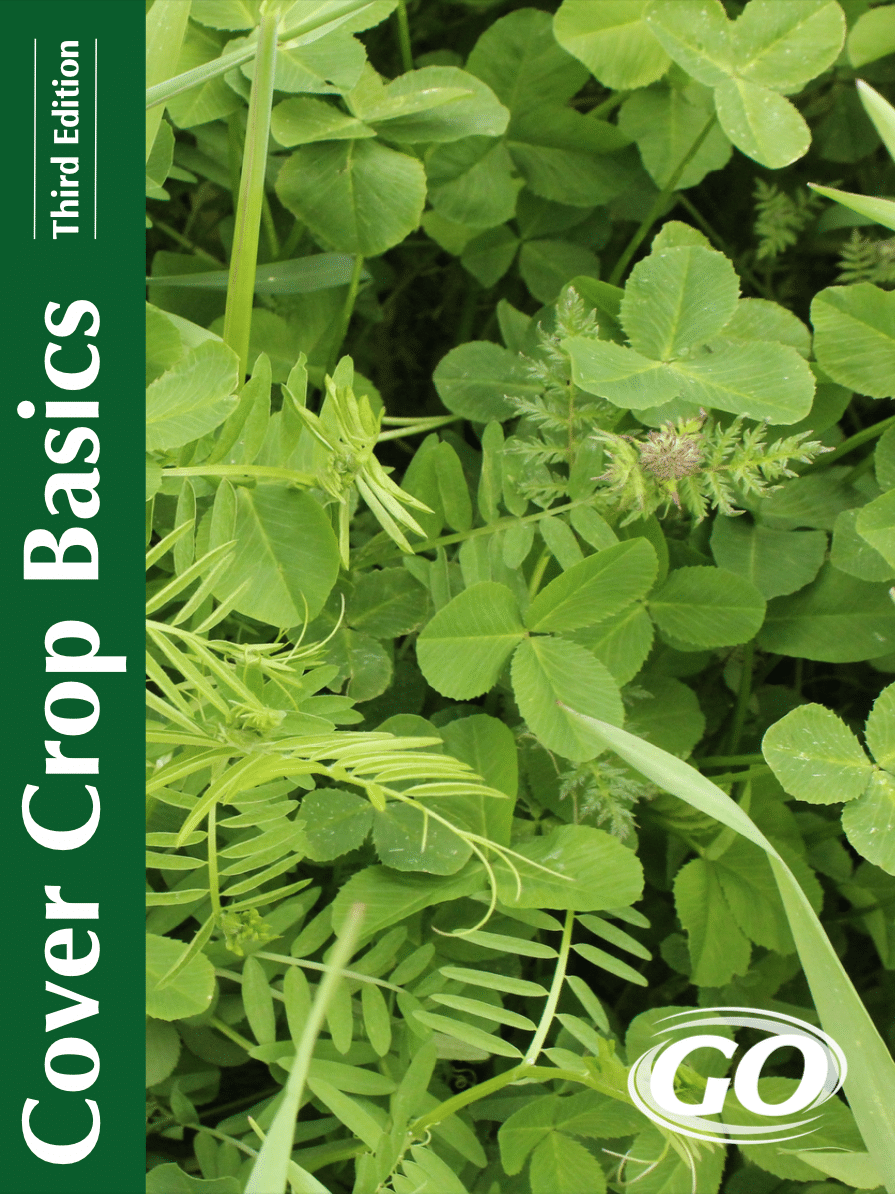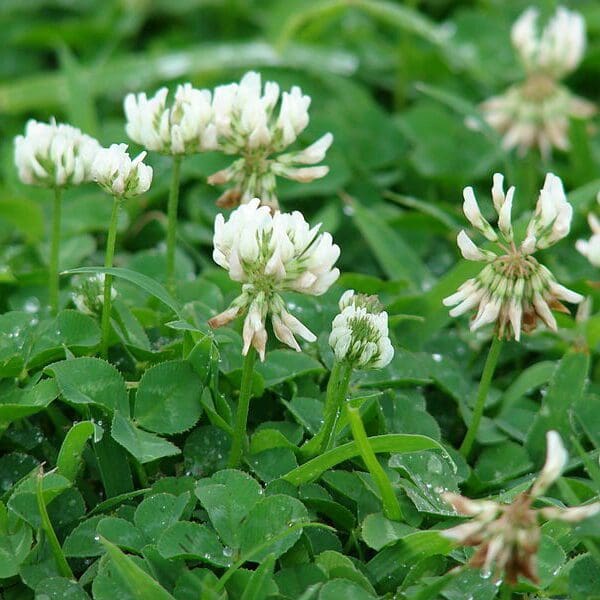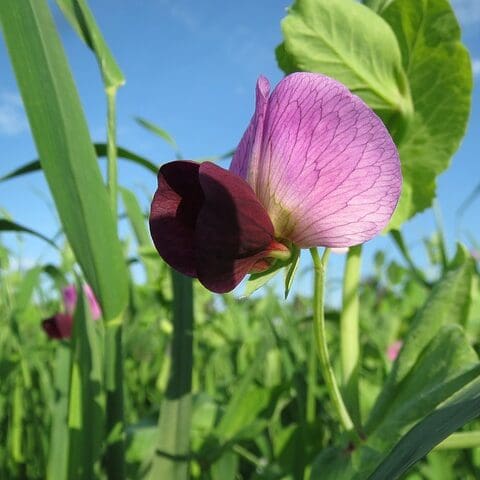Strawberry Clover (Trifolium fragiferum) is a low-growing (up to 14″), deep-rooted clover excellent in orchards, vineyards and pastures. It is heat and alkali tolerant and can be grazed off or mowed. It attracts beneficial insects and fixes nitrogen. Can handle up to two months of flooding and even grows along salty tidal streams. It is mainly used for pasture and in mixtures with grass for hay and silage. It has also been used to a limited extent as groundcover in orchards and vineyards and for green manure cover crop applications. Strawberry clover is noted for its ability to establish and persist on wet saline and alkaline soils and is adapted to wet meadows, streams and seeps.
Strawberry clover is noted for its ability to establish and persist on wet saline and alkaline soils and is adapted to wet meadows, streams and seeps. It is the most saline tolerant clover commercially available. Strawberry clover withstands flooding because the stolons have a tropic response that causes the tips to be elevated above the water level (Stevens and Monsen, 2004). It is adapted to a wide range of soil textures from loam to clay and tolerates soil pH of 5.3-8.2. It is tolerant of flooding for up to 2 months, salinity (up to 3 percent concentration), and short term drought. It needs at least 25 inches of annual precipitation to thrive but can withstand mean annual precipitation as low as 17 inches and can tolerate mean annual temperatures of 40-50°F. (UC SAREP Online). Strawberry clover is more hardy and tolerant of harsh environmental conditions than white clover.
Strawberry clover is an introduced perennial low-growing plant with creeping stems that root at the node to spread and it also produces seed. It is native to the eastern Mediterranean and southern Asia Minor Countries and has been intentionally and inadvertently spread by man to every continent on earth. It is grown to a limited degree as a pasture plant in moist alkaline and saline soils in the western and northern Great Plains states.
Planting should take place in late fall (dormant) or in spring. Late summer planting can be successful if there is adequate moisture (may require irrigation) and time for seedlings to establish before cold temperatures. Seed may contain up to 70 percent hard seed, so if seeding during the growing season, seed should be scarified prior to seeding. Dormant fall planting will allow natural seed scarification. Strawberry clover seedlings are easily established and grow rapidly but do not compete well with weeds. Successful stands establish from seeding and natural spread and get better over time.
Strawberry clover is tolerant of grazing once the plants have developed strong stolons or runners. It is suited to either rotational or set-stocking and heavy grazing pressure. The recommended minimum plant height to begin grazing or haying for most clovers is 4 inches and the minimum stubble height to remain at end of grazing or haying is 3 inches.
Strawberry clover can cause bloat in ruminants and increase the incidence of urinary calculi in sheep. These problems can be managed by maintaining a significant component of grass in the pasture. In waterlogged, mildly saline conditions, tall wheatgrass or ‘Newhy’ RS Hybrid wheatgrass are good companion crops and for non-saline, waterlogged conditions, tall fescue, perennial ryegrass and paspalum are suitable companion crops.
When seed is properly inoculated at time of planting, strawberry clover will fix nitrogen from N2 in the atmosphere, requiring little or no additional nitrogen fertilizer. However, legumes require relatively large amounts of phosphorus, potassium and sulphur, and will respond to additions of these nutrients as fertilizer when they are not adequately supplied by the soil. In grass-legume mixtures, it is not possible to supply the ideal combinations of elements for both grass and legume. If nitrogen is applied, the grass will tend to increase at the expense of the legume.
Strawberry clover in mixture with grass is highly suitable for hay but care needs to be taken to avoid the loss of the nutritious leaf from the clover during the curing and bailing process.
Synonyms: Trifolium fragiferum
Strawberry Clover NRCS Plant Guide
Strawberry Clover NRCS Plant Guide
PDF version of NRCS Plant Guide & Fact Sheet
Prepared By: Loren St. John, USDA, NRCS, Plant Materials Center, Aberdeen, ID
Daniel G. Ogle, USDA, NRCS, Boise, ID
Derek Tilley, USDA, NRCS, Plant Materials Center, Aberdeen, ID
Cover Crop Basics
An informative, authoritative guide to cover crops. Very comprehensive, and covers all geographic regions of the USA. Published by GO Seed.
Who is Great Basin Seed?
Great Basin Seed is a seed company that specializes in seed sales and consultation for home, ranch, farm, range and reclamation. We have been a leader in the seed industry since 1974.
Our History
We've been in the seed business since 1974.
What We Offer
We offer seed for home, farm, ranch, range and reclamation projects.
Meet the Gang
We have the best employees in the world! We are proud of the work they do, and trust them to serve you!
Right: Company founder Lloyd and his wife Paula Stevens in a wildflower seed production field circa 1977
Helpful Links
Additional information about this product can be found on the academic websites linked below.
Synonyms
Many plants have more than one common and scientific name. We've listed a few of them below.
- Strawberry Clover
- Trifolium fragiferum
Quick Plant Facts
| Common Name: | Strawberry Clover |
|---|---|
| Scientific Name: | |
| Lifespan: | |
| Origin: | |
| Plant Type: | |
| Min. Precipitation | 5-18 Inches |
| Seeds per lb. | 300,000 |
| Growth Height: | |
| Max Sowing Depth: | |
| Sowing Rate | 6-10 lbs. per acre as a stand alone item |
| Elevation of Occurance: | |
| pH Tolerance: | |
| Min. Precipitation: | |
| Root Form: | |
| Growth Season: | |
| Planting Rate: | |
| Best Time to Sow: | |
| Sun & Shade Tolerance: | Full Sun |
